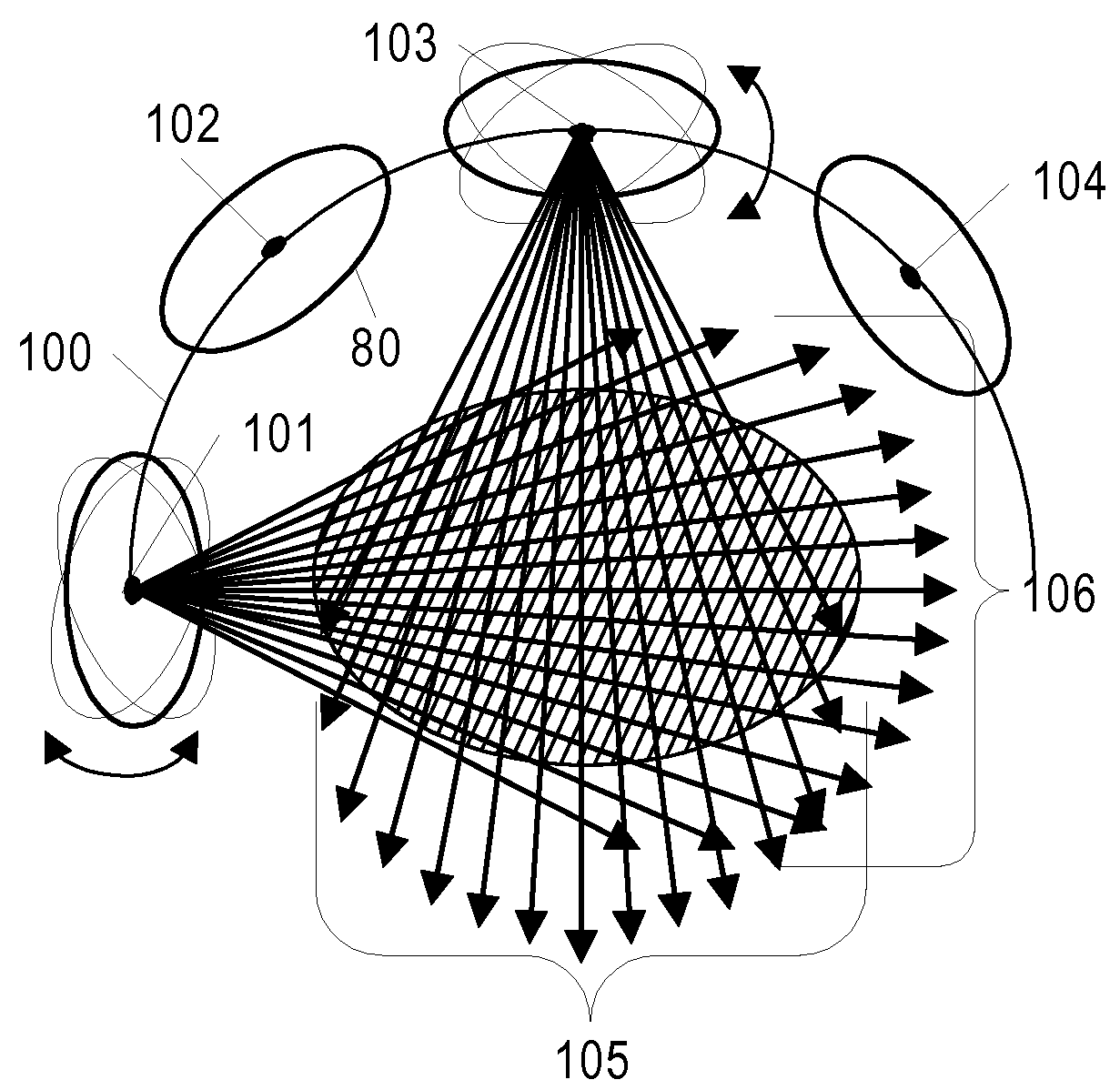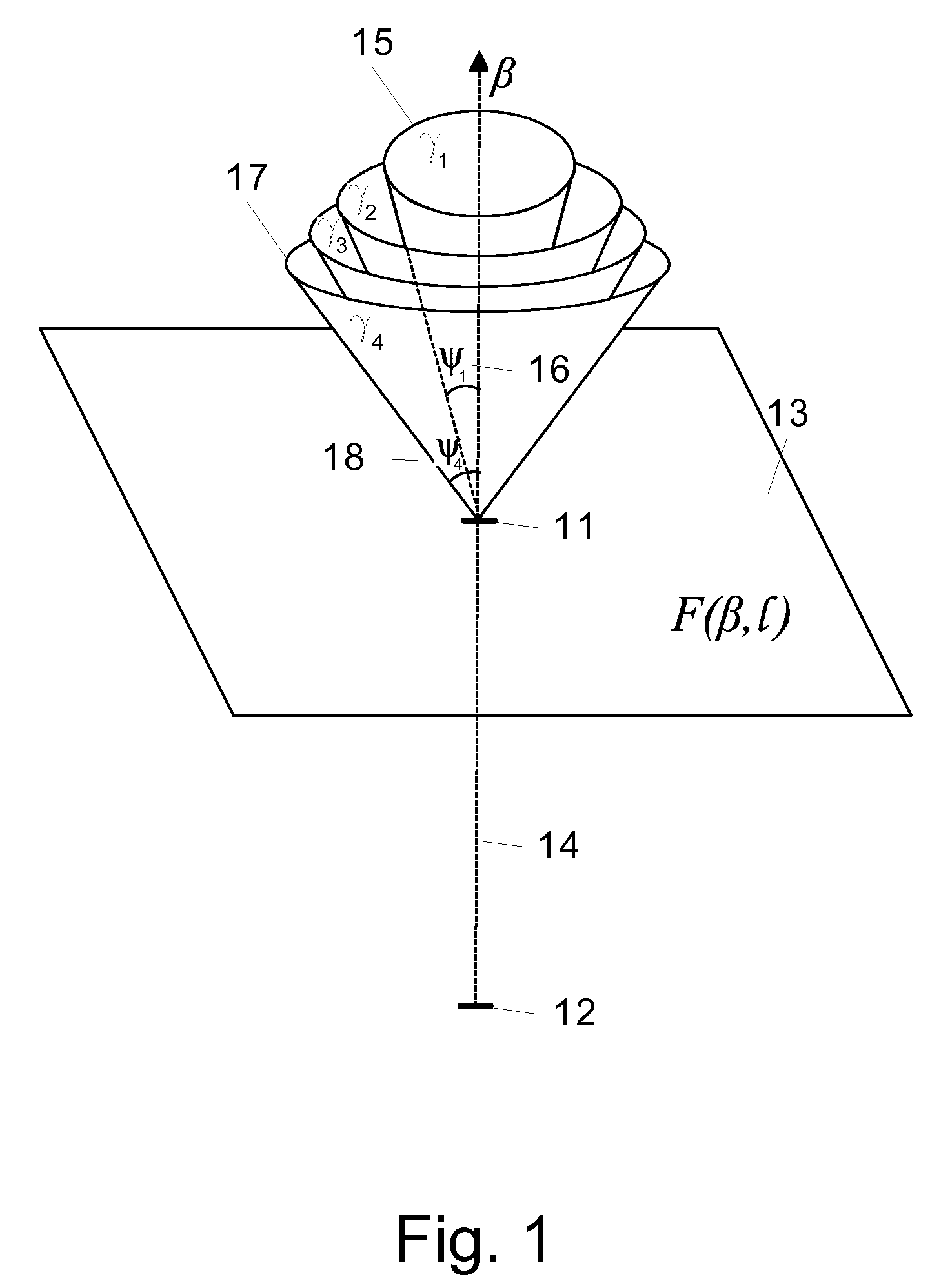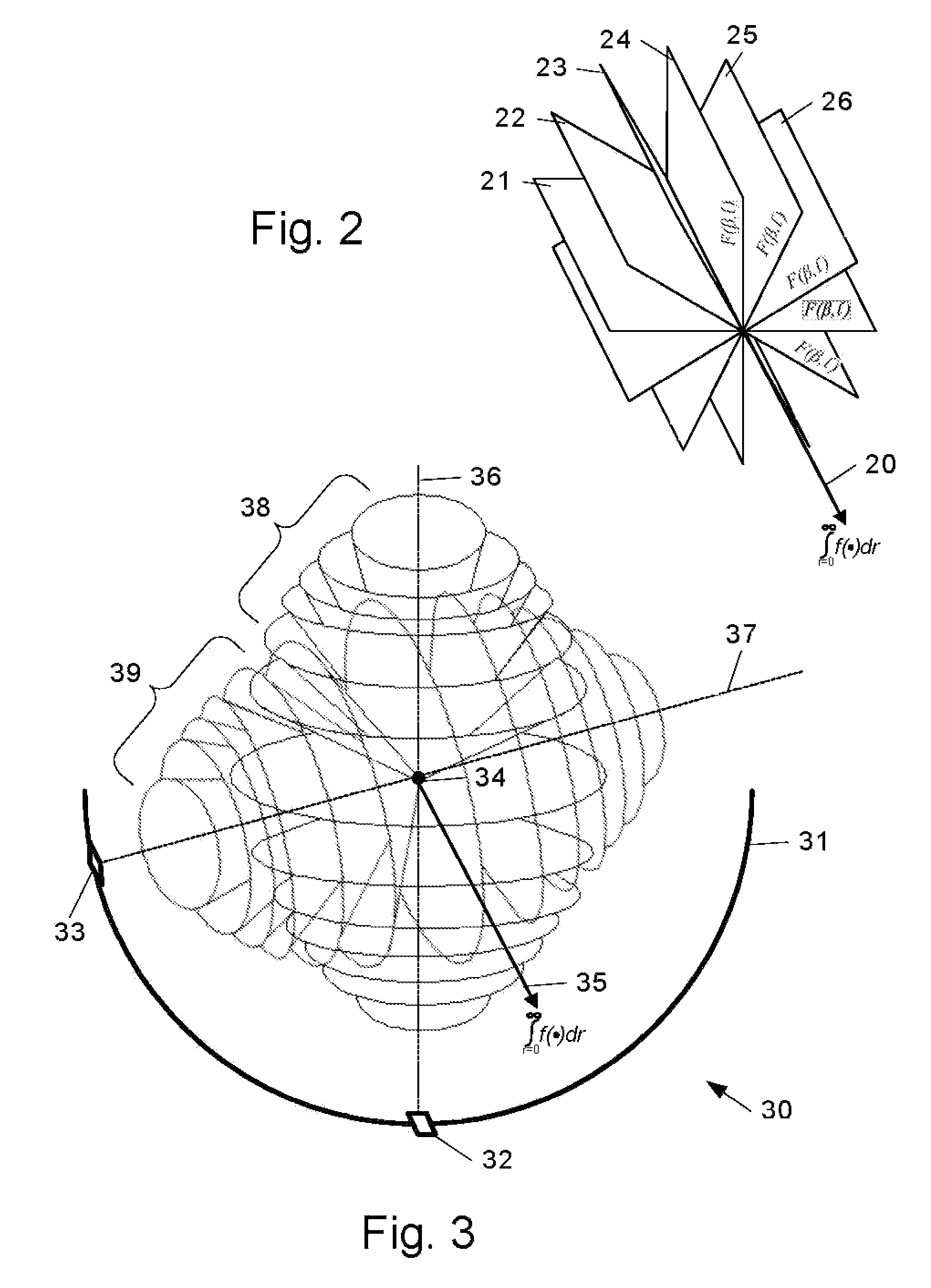Compton camera configuration and imaging method
a technology of compton camera and configuration method, applied in the direction of optical radiation measurement, radiation control device, instruments, etc., can solve problems such as unoptimized parameters
- Summary
- Abstract
- Description
- Claims
- Application Information
AI Technical Summary
Benefits of technology
Problems solved by technology
Method used
Image
Examples
Embodiment Construction
[0042]Finding the Conical Surface Region From Which a Detected Photon Originated
[0043]FIG. 1 illustrates how for a pair of first and second detector elements 11 and 12 in a Compton camera, there is a cone of origin associated with each photon that is counted, the cone having an apex at the first detector element 11, an axis of symmetry 14 collinear with the line connecting the first and second detector elements 11 and 12, and a conical angle 16, 18, etc., that corresponds to the difference between the pre- and post-scatter wavelengths of the photon.
[0044]If it is known that a photon has interacted with a first detector element 11, and is scattered (deflected) by the first detector element 11 toward a second detector element 12, then it is known that the photon originated from a point that lies on the surface of a cone whose apex is at the first detector element 11 and whose axis of symmetry 14 is the line containing first and second detector elements 11 and 12. If the pre- and post-...
PUM
 Login to View More
Login to View More Abstract
Description
Claims
Application Information
 Login to View More
Login to View More - R&D
- Intellectual Property
- Life Sciences
- Materials
- Tech Scout
- Unparalleled Data Quality
- Higher Quality Content
- 60% Fewer Hallucinations
Browse by: Latest US Patents, China's latest patents, Technical Efficacy Thesaurus, Application Domain, Technology Topic, Popular Technical Reports.
© 2025 PatSnap. All rights reserved.Legal|Privacy policy|Modern Slavery Act Transparency Statement|Sitemap|About US| Contact US: help@patsnap.com



